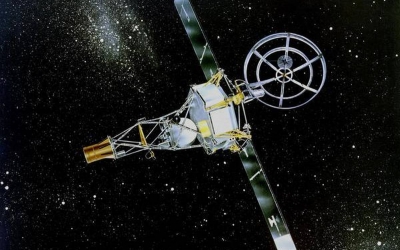
The Venus transit of 1882 was followed by a pair that occurred in 2004 and 2012. This means that there were no Venus transits in the 20th Century. The 20th Century, however, saw the first successful interplanetary mission conducted by humans. And the target for that mission was… yes, you guessed it right. Venus?
While the beginning of the Space Age is best remembered for the various firsts that were made possible, the failures that went along aren’t often mentioned in the same breath. The lack of success in some missions, however, weren’t out of the ordinary as humanity was venturing into uncharted territories for the first time.
The failures weren’t entirely frowned upon either as even these situations afforded opportunities afforded opportunities to learn. In fact, missions were planned keeping in mind the higher chances of failure and how to best cope with it if it were to happen.
Backup ready
The Americans had a backup strategy that involved building two similar spacecraft. This meant that even if the first one failed, the second one from the identical pair could be deployed at the earliest.
Mariner 1 and Mariner 2 were the first set of such twins in the Mariner series. Each of these spacecraft, which was powered by solar cells but also carried supplemental batteries on board, were 1 m across and 0.36 m thick.
Mariner 1 lifted off on July 22, 1962, but had to be detonated just 293 seconds after launch as it veered off course due to a typo in the computer code guiding it. Despite the fact that Mariner 1 lasted for less than five minutes, Mariner 2 was brought out of storage and launched towards Venus just 36 days later, on August 27.
Number of glitches
Using the Earth and sun as references, the spacecraft was to keep its attitude stable while making its way through space. It wasn’t without incident though, as there were a number of glitches through its flight.
On September 4, a course correction had to be performed to put it back on track. Four days later, cruise science experiments turned off for reasons NASA couldn’t determine. September 29 once again saw a loss of attitude control followed by a quick recovery. One month later, on October 31, there was a partial short circuit to one of the solar panels on the spacecraft. By November 15, this panel completely failed.
The fact that the spacecraft was approaching Venus and hence getting closer to the sun meant that the working solar panel could generate enough power to keep it going. Eighty years on after the last transit of Venus had been observed from Earth, a spacecraft was now getting close to perform a Venus flyby.
Temperatures, dense clouds
Mariner 2 made its closest approach to the planet on December 14, 1962, flying at a distance of 34,854 km from Venus. Having become the first successful interplanetary mission, mariner 2 had its glimpse of Venus, scanning the planet for 42 minutes. Before continuing on its heliocentric orbit around the sun, Mariner 2 gathered data about our neighbouring planet. NASA maintained contact with the spacecraft till January 3, 1963.
The data conveyed by Mariner 2 showed that temperatures across Venus were more or less uniform and that the planet in general was a hothouse. It also revealed that the planet is under high pressure and that the entire Venus is shrouded in a dense cloud layer above the surface.
Even though Mariner 2 enjoyed only modest success in terms of scientific results, it is remembered and honoured for the first it went out and achieved. The mission served as a gateway to many future endeavours that followed, as it opened up space to the human race like never before.
Picture Credit : Google




